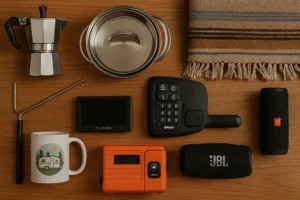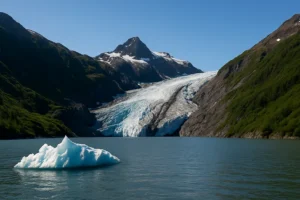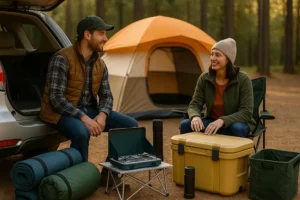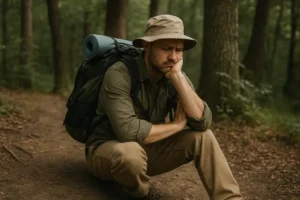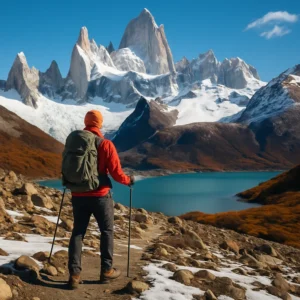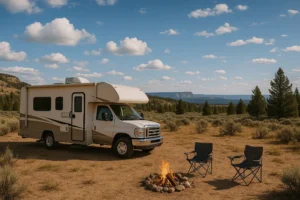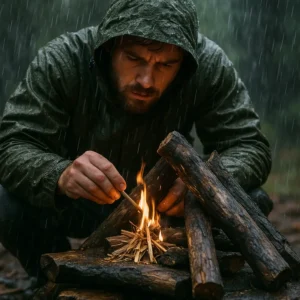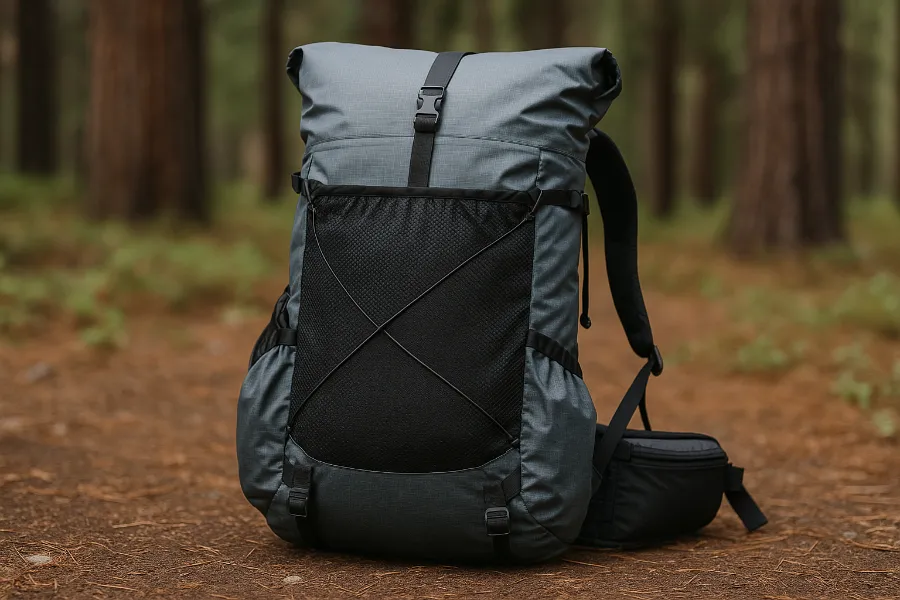
There’s something magical about strapping everything you need to your back and walking into the wilderness. But that magic quickly fades if you’re cold, hungry, or hauling 60 pounds of unnecessary gear. Backpacking necessities are all about balance: carrying enough to stay safe and comfortable, without weighing yourself down.
This guide covers the true backpacking necessities, breaking them into clear categories so you know exactly what belongs in your pack—and what can stay at home.
Backpack
Your backpack is the foundation of your setup. The right pack fits your torso, carries your load comfortably, and doesn’t rub you raw.
- Capacity: Overnight trips usually require 30–50 liters; multi-day trips often need 50–70 liters.
- Fit: Get measured at an outdoor store to ensure torso length and hip belt size are correct.
- Waterproofing: Packs are rarely 100% waterproof. Use a waterproof liner or pack cover to protect critical gear.
Shelter
Shelter is non-negotiable, whether that’s a tent, tarp, or bivy.
- Tent: Lightweight freestanding tents are convenient; trekking-pole tents save weight.
- Tarp: Ultralight but requires skill and bug protection.
- Groundsheet: Protects your tent floor; some use cheap window insulation film as a lighter option.
- Stakes & Poles: Match them to your tent or tarp setup.
Sleep System
Good sleep is a backpacking necessity. Don’t cut corners here.
- Sleeping Bag or Quilt: A 20–30°F rating works for most 3-season trips. Quilts save weight but require a warm pad.
- Sleeping Pad: Insulates you from the ground. Look for an R-value of 3–4.5 for three-season trips.
- Pillow: Small inflatable or a stuff sack filled with clothes.
Navigation
Even well-marked trails can get confusing. Always carry multiple tools.
- Digital: Apps like AllTrails or FarOut with offline maps.
- Analog: Map and compass as backup.
- Satellite Communicator: For emergencies, a Garmin inReach Mini or similar can be a lifesaver.
Electronics
Don’t go overboard, but a few essentials make life easier.
- Headlamp: With extra batteries or rechargeable.
- Power Bank: At least 10,000mAh to keep phone/GPS running.
- Charging Cords: Bring the right cables for all devices.
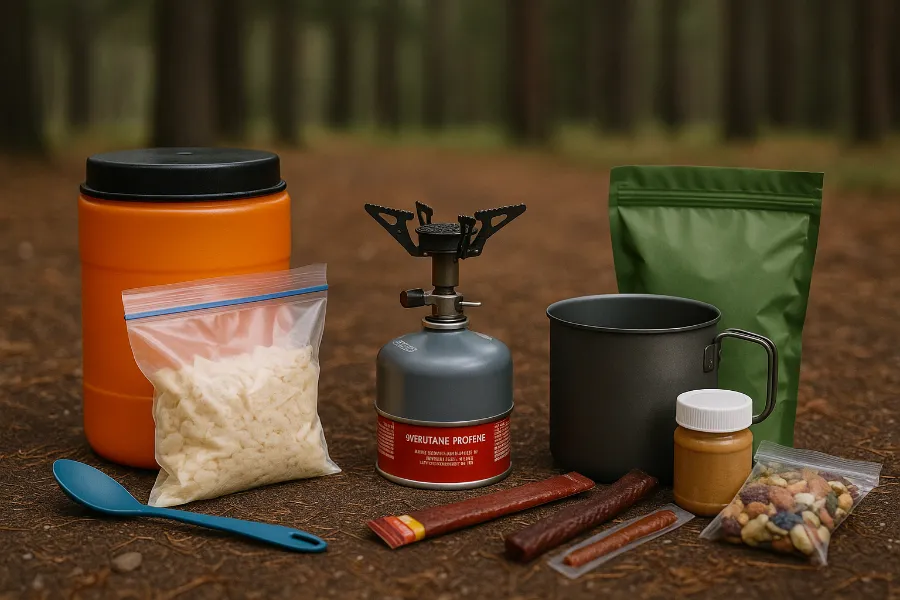
Cooking & Food
You burn serious calories backpacking, so plan for energy-dense meals.
- Stove: Lightweight options like MSR PocketRocket or Jetboil.
- Cookware: A titanium pot (500–900ml is plenty for one).
- Utensil: Long-handled spoon or spork.
- Food Storage: Bear canister where required; odor-proof bags elsewhere.
- Food Ideas: Dehydrated meals, oatmeal, jerky, nut butters, energy bars, trail mix.
Water
Water is a true backpacking necessity—you can’t compromise here.
- Filter: Sawyer Squeeze or Katadyn BeFree.
- Chemical Treatment: Backup like Aquamira drops or tablets.
- Containers: Smartwater bottles are lightweight; a 2L collapsible bladder is handy for camp.
- Electrolytes: Tablets or powders help prevent dehydration.
Clothing
Think layers, not bulk. Cotton stays home.
- Footwear: Trail runners (Altra, HOKA) or lightweight boots. Bring gaiters if hiking in debris-heavy terrain.
- Socks: Merino wool or toe socks like Injinji to prevent blisters.
- Base Layer: Breathable shirt, underwear, sports bra.
- Insulating Layer: Down or synthetic puffy.
- Rain Layer: Waterproof jacket (and pants if needed).
- Extras: Beanie, gloves, sleep socks, and one set of backup underwear.
Toiletries, First Aid & Repair
Small but vital items make a huge difference.
- Toiletries: Toothbrush, toothpaste, biodegradable soap, small brush, sunscreen, lip balm.
- Bathroom: Trowel, toilet paper or wipes, sealable bag for trash.
- First Aid Kit: Bandages, antiseptic, blister care (Leukotape, KT tape).
- Repair Kit: Duct tape, needle/thread, gear patches, small tube of super glue.
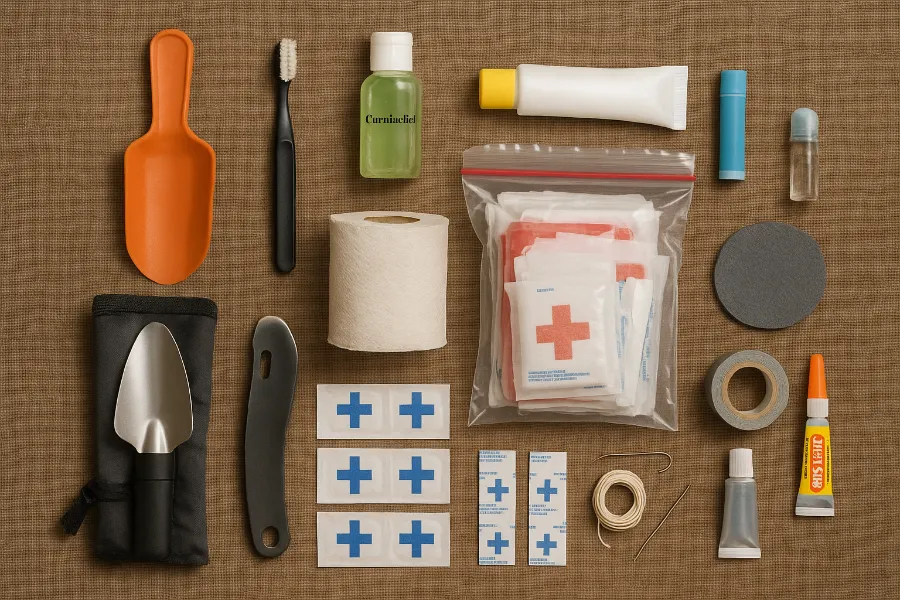
Sun & Bug Protection
Don’t underestimate these necessities.
- Sun: Sunglasses, hat, sunscreen, UPF clothing.
- Bugs: Insect repellent, head net, lightweight long sleeves/pants during mosquito season.
Miscellaneous
The small things make a big impact.
- Trekking Poles: Aid stability, reduce joint strain, and can double as tent poles.
- Fanny Pack: For snacks, phone, maps, and items you need quickly.
- Wallet/ID: Keep it simple—a zip bag works.
- Traction Gear: Microspikes or crampons if hiking on ice or snow.
Packing & Organization Tips
How you pack matters almost as much as what you pack.
- Heaviest Items: Centered close to your back.
- Frequently Used Gear: Snacks, rain jacket, maps in outside pockets or near the top.
- Waterproof Critical Items: Sleeping bag, warm layers, and electronics.
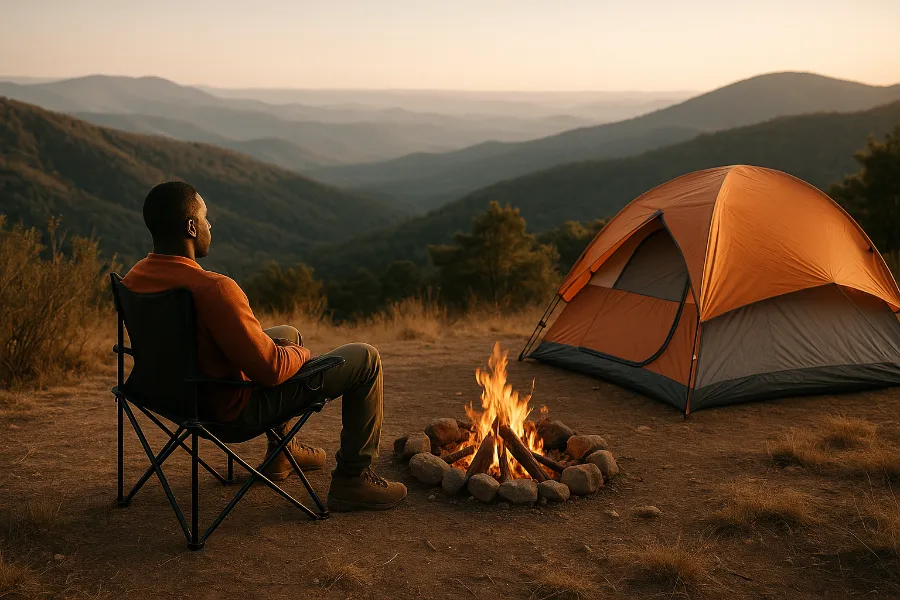
Final Thoughts
Backpacking necessities are about more than just gear—they’re about preparation, comfort, and peace of mind. Start light, bring the essentials, and refine your setup with experience. The right kit won’t just keep you safe; it’ll let you enjoy the miles, the views, and the freedom that only backpacking delivers.

